The Piper Classification starts with an analysis of the alignment of the temporomandibular joint disk. The disk is the cushion that separates the lower jaw from the skull base. Ligaments help to tether the disk to the mandibular condyle, which is part of the lower jaw structure. llustration 1 shows the overview of the location of the structures.
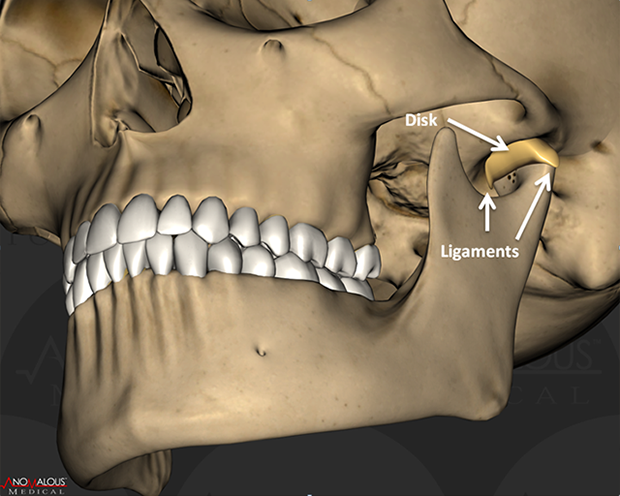
Notice that each joint has a disk that is tethered to the mandibular condyle by two ligament systems. These are called the collateral ligaments, and one ligament system is close to the skin (lateral collateral ligament), and the other is located in the deep part of the joint (medial collateral ligament.
In summary, each joint has a disk, and each disk has two ligament systems. Therefore, one or both collateral ligaments may be injured in one or both joints. Trauma or disease can cause any combination of collateral ligament stretching or tearing. The result of ligament stretching or tearing is that the disk may or may not dislocate or herniate in that part of the joint with the ligament damage. That is one of the reasons why TMJ damage can vary from patient to patient.
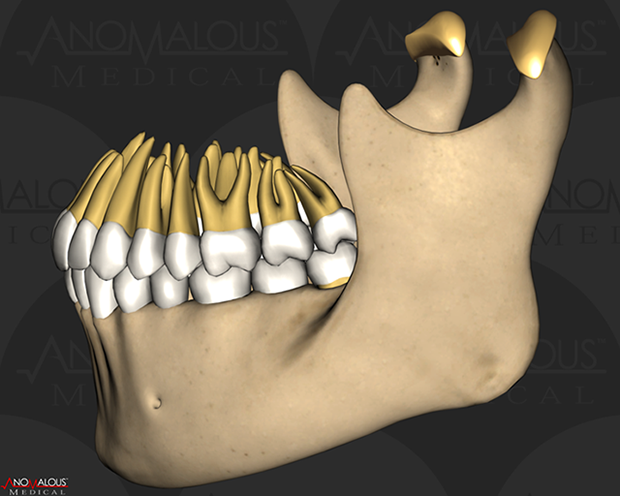

To complicate matters a little further, there is variability as to how much a disk will herniate, and that depends on how much the collateral ligaments have been stretched or torn. This degree of diskal herniation is graded as normal, mild, moderate, or sever. If graded with MRI, the disk position is read as 1:00 o'clock, 12:00 o'clock, 11:00 o'clock, or 10:00 o'clock. Note the following examples.
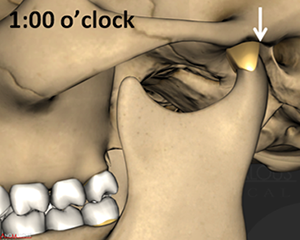
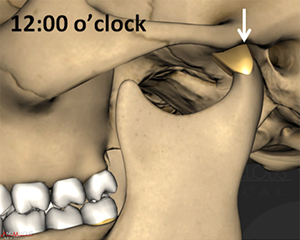
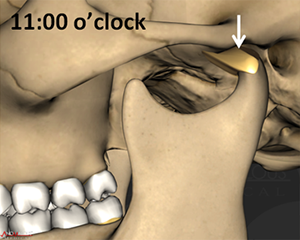
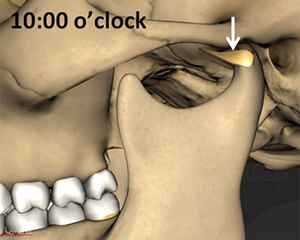
Clinically, it is difficult to know exactly how much disk herniation there is in the temporomandibular joints without CT or MRI scans, but joint noises may give some clues. TMJs may be quiet; they may click or pop; or they may have crepitus or sandpaper sounds. Here is what is happeing. In a normal TMJ, the condyle can move frontward away from the ear or backward toward the ear. If the disk is not herniated, then the joint should not make any sounds as the jaw is opened. Note how the disk stays between the mandibular condyle and skull base with mouth opening.
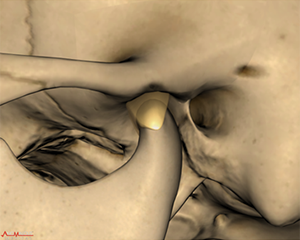
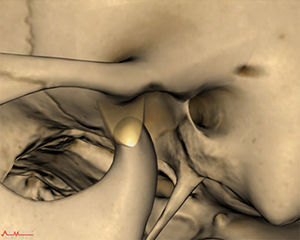
If ligament stretching allows the disk to herniate, it will slip out of place with the jaw closed. When the jaw opens, a snapping or clicking sound usually represents a "reduction" of the condyle beneath the disk. Upon closing, the condyle typically slips off the disk again, and the pop may be heard upon closure. Joint sounds are very easy for patients to hear since the ear is directly adjacent. This clicking can come from one or both joints and can occur with stretching one or both of the ligament systems. Furthermore, it will represent disk herniation ranging from 12:00 to 11:00 to 10:00 o'clock.
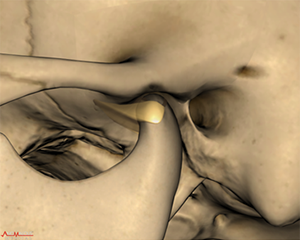
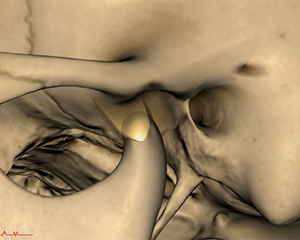
If a joint has been clicking and then stops clicking, the disk has either returned back to normal alignment or it has become locked. It is unusual for the disk to return to normal, and it will do so only with milder or earlier damage. Therefore, the disappearance of a click, especially if it has been there for months to years, usually indicates locking of the disk in front of the condyle. This is also called a "non-reducing" disk. Disks will not lock out of position unless they are severely herniated (10:00 o'clock).

727-823-3220
131 2nd Ave. S.
St. Petersburg, FL 33701